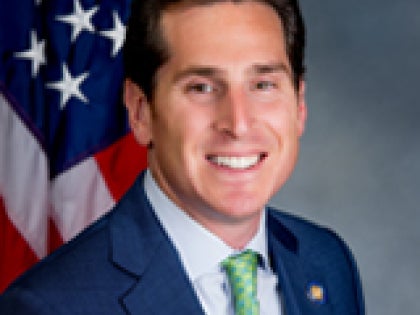
Analysis: Federal, state school aid going up 1% for Long Island districts
Federal and state financial aid to Long Island school districts would rise by just over 1% next year, compared with a statewide increase of more than 7%, according to a Newsday analysis of Gov. Andrew M. Cuomo's proposed budget.
A review of district-by-district aid figures for the 2021-22 school year, posted by the state late Tuesday, shows the Nassau-Suffolk region would receive $3.909 billion. That would be up 1.15% from this year's $3.865 billion. Fifty local districts would lose aid under the plan.
In contrast, double-digit-percent raises are proposed for some urban school systems, with New York City slated for a 13.01% hike, Rochester for 12.10% and Buffalo for 10.23%.
Cuomo's budget package, outlined in broad terms Tuesday, contended that the governor was maintaining a "strong commitment to education" generally, despite economic challenges posed by the COVID-19 pandemic. Noted, for example, was the fact that New York State spends more than $24,000 per student — the highest figure for any state in the nation.
On Wednesday, Freeman Klopott, a press officer for the state's Division of the Budget, sent a statement to Newsday saying that aid money had been distributed according to a federal formula that allocates 55.8% of money to New York City schools, 8.5% to Long Island and 35.7% to the rest of the state. For next year, the state, which faces a deficit, would apply more than $600 million in federal money to offset cuts in its own assistance to schools.
"The federal government let the virus come to New York State unchecked, and we've suffered the consequences," Klopott said. "New leadership in Washington brings new hope that the federal government will live up to its responsibility and, if they do, the state will be able to provide more funding to our schools."
Some Long Island officials said Wednesday they were struck by contrasts between the governor's funding blueprint for this region and other parts of the state.
"It's unfair to the children of Long Island who represent 17% of the state's students," said Joseph Dragone, a longtime school business official and representative to the Long Island Education Coalition, an advocacy group.
Traditionally, governors' budget messages represent a starting point in negotiations, and state lawmakers tend to add more schools money to the budget before a final version is adopted. April 1 is the deadline under state law.
State Sen. Todd Kaminsky (D-Long Beach) voiced concern Wednesday over the aid plans put forward by Cuomo, also a Democrat, adding that he and his Senate colleagues would push for more money.
"These numbers are troubling," Kaminsky said of the district-by-district figures just posted. "But with a larger share of federal help, and with hard work and creativity on our own part, we are confident we can keep Long Island's historic share of school funding and provide schools with adequate increases."
Kaminsky is senior member of the Island's five-member Democratic Senate delegation.
Some local districts receiving substantial federal aid because they serve low-income families would fare only modestly well under the Cuomo distribution plan. Brentwood would get a 3.68% boost in total aid, Hempstead 0.11%, Roosevelt 4.01% and Wyandanch 4.18%.
Cuomo's plan includes several other features likely to prove political flashpoints on the Island.
One change, proposed in years past and rejected by legislators, would consolidate 11 existing aid programs including support for bus transportation and regional BOCES training into a single block grant.
Local education leaders oppose this approach on grounds it would curb a major source of funding in this region. Cuomo contends, on the other hand, that more money should be distributed according to the state's foundation formula, which gives extra weight to helping students with disabilities or limited English skills.
Cuomo also would cut $91.5 million statewide from the STAR program, which serves to curb growth in property taxes. The program is largely designed to help suburban homeowners.
Andrea Vecchio, an East Islip taxpayer advocate, said Wednesday that STAR should be preserved, despite some imperfections.
"Taxes should be cut for every single person, because we didn't get the services we paid for," Vecchio said, referring to effects of the pandemic. "Schools shut down. Teachers weren't in classrooms for long periods of time."
This marks the first year Cuomo has included STAR payments in district-by-district listings of sources of financial support — a source of confusion, since STAR money doesn't go directly to schools. The New York State School Boards Association sent out an email Wednesday cautioning that such funds "are not accounted for nor received by districts as traditional state aid."
